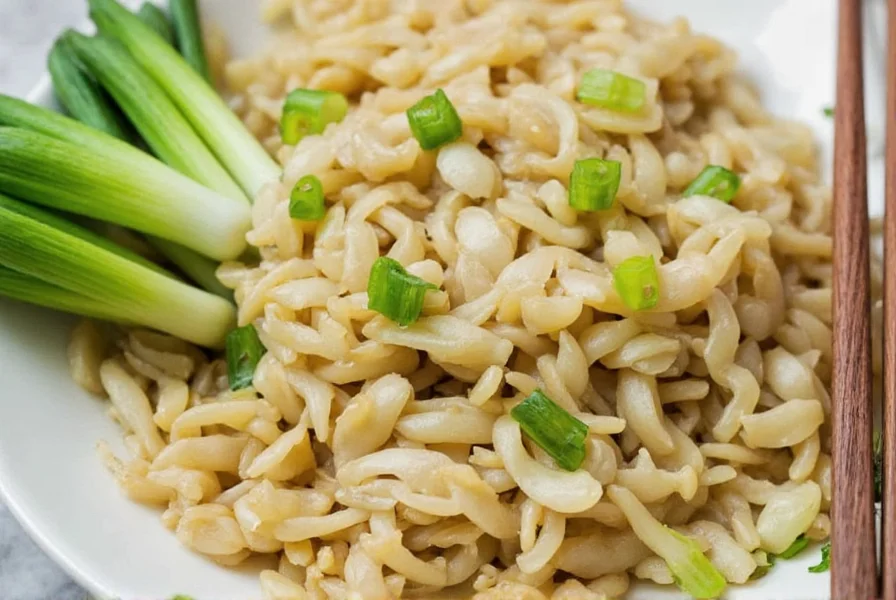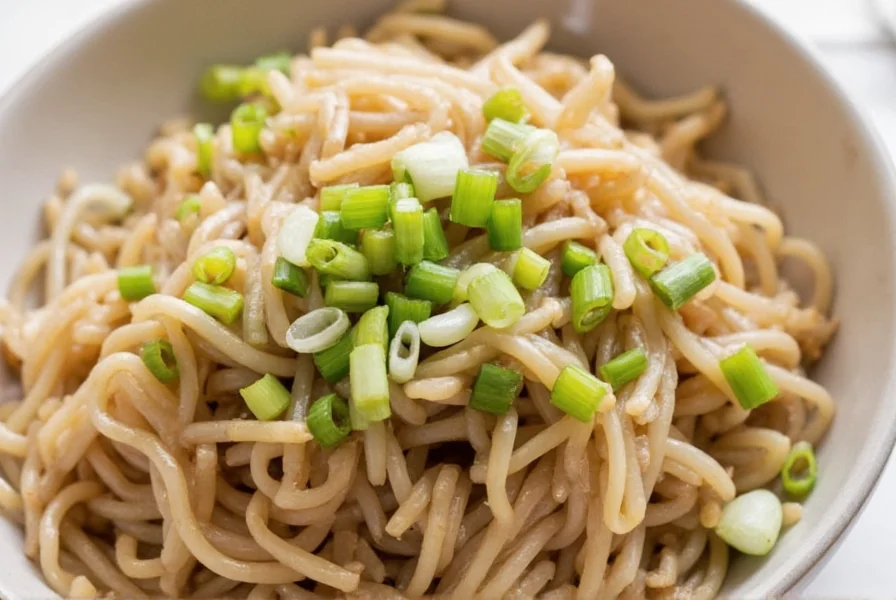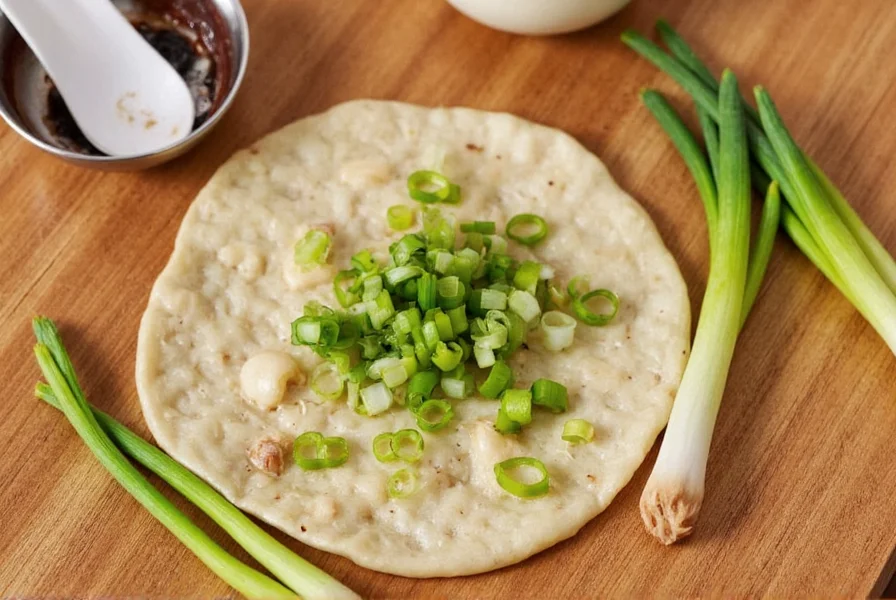These two ingredients have been staples in Asian pantries for centuries, valued not only for their flavor profiles but also for their complementary textures and cooking properties. Understanding how to properly select, prepare, and use ginger and scallion can transform ordinary dishes into restaurant-quality meals with authentic depth of flavor.
The Science Behind the Perfect Pairing
Ginger contains gingerol, the compound responsible for its distinctive spicy warmth, while scallions (also called green onions) offer a milder allium flavor with both sweet and pungent notes. When combined, these ingredients create what culinary experts call "aromatic synergy"—where the whole becomes greater than the sum of its parts. The volatile compounds in both ingredients release at different temperatures, providing layered flavor development during cooking.
Understanding Ginger Varieties and Uses
Fresh ginger root, scientifically known as Zingiber officinale, comes in several varieties that affect its culinary application:
| Ginger Type | Characteristics | Best Culinary Uses |
|---|---|---|
| Young Ginger | Thin skin, juicy, mild flavor | Salads, pickling, delicate sauces |
| Mature Ginger | Thicker skin, fibrous, stronger heat | Stir-fries, braises, robust sauces |
| Preserved Ginger | Vinegar or sugar preserved | Garnish, sushi accompaniment |
Professional chefs recommend using a spoon to peel ginger rather than a knife, as this removes only the thin outer layer without wasting the flavorful flesh beneath. For optimal flavor release in cooking, slice ginger against the grain to expose more surface area.
Scallion Selection and Preparation Techniques
Scallions, or Allium fistulosum, consist of white bulbs and green stalks that offer different flavor intensities. The white portion delivers stronger onion flavor, while the green parts provide milder, grassier notes. When selecting scallions, look for crisp stalks with vibrant green color and firm white bases.
Proper cutting technique significantly impacts how scallions behave in cooking. For stir-fries, cut on a diagonal to create larger surface areas that caramelize beautifully. For garnishes, use the "chiffonade" technique—stacking green portions and slicing thinly crosswise for uniform pieces.
Mastering Ginger and Scallion Combinations
The magic of ginger and scallion lies in their sequential addition to dishes. Culinary professionals follow this timing principle:
- Add ginger first to hot oil to infuse the cooking medium
- Follow with white parts of scallion after ginger has softened
- Introduce green scallion portions near the end of cooking
This sequence maximizes flavor extraction while preserving the delicate nuances of each ingredient. For ginger scallion oil—a versatile condiment popular across Asian cuisines—use a 1:2 ratio of ginger to scallion, slowly infusing in neutral oil at 250°F (121°C) for 20 minutes.
Signature Dishes Featuring Ginger and Scallion
Chefs worldwide rely on this dynamic duo for foundational flavors in numerous dishes:
- Chinese Steamed Fish: The classic ginger-scallion oil poured over freshly steamed fish
- Stir-fried Noodles: Added at the "wok hei" stage for aromatic depth
- Marinades for Poultry: Combined with soy sauce and rice wine
- Soups and Broths: Forming the "holy trinity" with garlic in many Asian stocks
When preparing ginger and scallion for steamed fish—a technique known as jiong cong you in Chinese cuisine—finely mince both ingredients to maximize surface area. The finer the chop, the more flavor compounds release into the hot oil.
Storage Methods for Maximum Freshness
Proper storage extends the usability of both ingredients significantly:
- Ginger: Store unpeeled in a paper bag in the vegetable crisper (up to 3 weeks) or freeze whole for later grating
- Scallions: Trim roots, wrap in slightly damp paper towel, and store in airtight container (up to 10 days)
For longer preservation, create ginger-scallion paste by blending equal parts with neutral oil, then freeze in ice cube trays. These flavor cubes work perfectly for quick weeknight cooking while maintaining fresh ingredient quality.
Historical Evolution of Ginger and Scallion in Asian Cuisine
Ginger and scallion usage has evolved through distinct culinary eras, with archaeological and historical records documenting their progression:
| Period | Ginger Development | Scallion Development |
|---|---|---|
| 2000-500 BCE | First cultivated in Southeast Asia; mentioned in Shennong Ben Cao Jing (3rd century BCE) as medicinal herb | Domesticated in Siberia/Mongolia; spread to Yellow River basin by Neolithic settlements (Yangshao culture) |
| 500 BCE-600 CE | Traded along Silk Road; Zhang Qian's Han Dynasty reports (138 BCE) document ginger as valuable commodity | Recorded in Qimin Yaoshu (544 CE) as essential crop; multiple varieties developed during Six Dynasties period |
| 600-1500 CE | Integrated into Tang Dynasty medicinal cuisine; Sun Simiao's Qian Jin Yao Fang (652 CE) details culinary applications | Standardized in Song Dynasty cookbooks; Buddhist vegetarian cuisine (zhai cai) codified scallion usage in monastic diets |
| 1500-Present | Global dissemination via European trade; modern cultivars selected for culinary use (e.g., Hawaiian white ginger) | UNESCO recognition (2021) of Jiangsu cuisine's ginger-scallion techniques as Intangible Cultural Heritage |
Source: Ginger historical references from British Library archives and scallion development from FAO Allium crop science documentation.
Contextual Limitations: When Ginger-Scallion Pairing Isn't Ideal
While versatile, this aromatic duo has specific constraints that impact culinary authenticity and effectiveness:
- High-Temperature Cooking: Ginger's [6]-gingerol degrades rapidly above 160°C (320°F), with studies showing 52% compound loss at standard wok-frying temperatures (200°C/392°F). As documented in the Journal of Agricultural and Food Chemistry, this thermal degradation diminishes both flavor complexity and anti-inflammatory benefits.
- Delicate Seafood Applications: The China Seafood Processing Association's 2021 guidelines specify ginger concentrations exceeding 0.5% by weight mask natural sweetness in white fish preparations (China Seafood Processing Association).
- Regional Authenticity Constraints: In authentic Sichuan cuisine, scallion is restricted to mild braises and clear soups per the Sichuan Cuisine Museum's technique codification, as garlic dominates ma-la (numbing-spicy) dishes (Sichuan Cuisine Museum).
Health Considerations and Nutritional Benefits
Both ginger and scallion offer documented health properties when consumed as part of a balanced diet. Ginger contains gingerols with anti-inflammatory properties, while scallions provide allicin compounds and vitamin K. When used together in cooking, these ingredients contribute to dishes with enhanced nutritional profiles without adding significant calories.
Common Substitutions and When to Avoid Them
While fresh ginger and scallion deliver the best results, understanding substitutions helps when ingredients aren't available:
- Ginger substitutes: Galangal (different flavor profile), ground ginger (use 1/4 teaspoon for 1 inch fresh)
- Scallion substitutes: Chives (milder), leeks (sweeter), or shallots (stronger)
However, for authentic ginger-scallion dishes like Chinese steamed fish, substitutions significantly alter the intended flavor profile. In these cases, it's better to omit one ingredient than use an inappropriate substitute.
Advanced Techniques for Home Cooks
Elevate your cooking with these professional techniques for ginger and scallion:
- Create ginger-scallion oil by slowly heating sliced ingredients in neutral oil until fragrant but not browned
- Use the "velveting" technique—marinate proteins with ginger-scallion mixture before stir-frying
- Make ginger-scallion paste for consistent flavor in multiple dishes
- Try the "double infusion" method: first infuse oil with ginger, then add scallion
When making ginger-scallion oil, the ideal ratio is one part ginger to two parts scallion by volume. Heat the oil to just below smoking point, then reduce to medium before adding ingredients to prevent burning while maximizing flavor extraction.

Conclusion: Mastering the Foundation of Asian Flavors
Ginger and scallion represent more than just ingredients—they form the aromatic foundation of countless Asian dishes. By understanding their individual properties and how they complement each other, home cooks can dramatically improve their culinary results. Whether you're preparing a simple weeknight stir-fry or an elaborate steamed fish dish, mastering this essential pairing unlocks authentic flavors that define much of Asian cuisine.
Frequently Asked Questions
What's the proper ratio of ginger to scallion in cooking?
The standard ratio is 1 part ginger to 2 parts scallion by volume. For most stir-fries and sauces, use approximately 1 tablespoon minced ginger to 2 tablespoons minced scallion white parts. When making ginger-scallion oil, maintain this ratio for balanced flavor without either ingredient dominating.
Should I use ginger before or after scallion when cooking?
Always add ginger first to hot oil, allowing 30-60 seconds for its flavor compounds to infuse the cooking medium before adding the white parts of scallion. The green portions of scallion should be added near the end of cooking to preserve their fresh flavor and vibrant color.
Can I substitute dried ginger for fresh in ginger-scallion dishes?
Dried ginger powder doesn't provide the same flavor profile as fresh ginger in traditional ginger-scallion applications. For authentic results, fresh ginger is essential. If absolutely necessary, use 1/4 teaspoon ground ginger for every 1 inch of fresh ginger, but recognize this will significantly alter the dish's character.
How do I prevent ginger and scallion from burning during cooking?
To prevent burning, add ginger to oil that's hot but not smoking (around 325°F/163°C). Cook over medium heat, stirring constantly. For scallions, add the white parts after ginger has softened slightly, then the green portions in the last minute of cooking. Using enough oil (2-3 tablespoons per serving) creates a protective medium that prevents scorching.
What's the best way to store ginger and scallion for long-term use?
For long-term storage, freeze whole ginger root (grate directly from frozen) and chop scallions before freezing in oil. Alternatively, make ginger-scallion oil and freeze in ice cube trays. Properly stored, frozen ginger lasts 6 months while scallion-oil cubes remain usable for 3 months without significant flavor degradation.












 浙公网安备
33010002000092号
浙公网安备
33010002000092号 浙B2-20120091-4
浙B2-20120091-4